Author: Marshall Schott
Brewer: Jake Freshour
Germany is a country with a rich history of lager beer brewing, providing drinkers around the world with delicious lagers whose characteristics were in many ways defined by the region in which they were developed. One such style is German Helles Exportbier, or what many commonly refer to as Dortmunder Export, a pale lager first brewed in 1873 by Dortmunder Union in Germany’s Dortmund region.
While the original brewers took inspiration from the Pilsners found in the Czech Republic at the time, Helles Exportbier is noted for its minerality, which lent the beer a more pronounced hop bitterness that balanced the slightly sweet malt character. It also tended to have a somewhat higher alcohol content than other pale lagers of the day, hence the “export” connotation. The BJCP provides the following description:
A pale, well-balanced, smooth German lager that is slightly stronger than the average beer with a moderate body and a mild, aromatic hop and malt character.
Helles Exportbier was one of the first lagers I ever made. Having swallowed whole every step said to be “required” to produce a good example, from long boils to cool fermentation and extended lagering, my patience was definitely tested. Thankfully, the finished beer was great, which provided some validation of the arduous process it took to brew it. Of course, in no small part influenced by certain xBmt results, the skeptical part of me began to wonder if all those steps were really necessary. Could a tasty Helles Exportbier be made using less socially acceptable methods?
| BREWING THE BEER |
A huge thanks to Oregon homebrewer Jake Freshour for brewing this beer and bringing it to Homebrew Con 2018 in Portland, OR for data collection!
Short & Shoddy German Helles Exportbier
Recipe Details
| Batch Size | Boil Time | IBU | SRM | Est. OG | Est. FG | ABV |
|---|---|---|---|---|---|---|
| 6 gal | 30 min | 25.7 IBUs | 5.9 SRM | 1.053 | 1.010 | 5.8 % |
| Actuals | 1.053 | 1.009 | 5.8 % | |||
Fermentables
| Name | Amount | % |
|---|---|---|
| Pelton Pilsner-style Malt (Mecca Grade) | 11 lbs | 78.57 |
| Vanora Vienna-style Malt (Mecca Grade) | 2 lbs | 14.29 |
| Metolius Munich-style Malt (Mecca Grade) | 1 lbs | 7.14 |
Hops
| Name | Amount | Time | Use | Form | Alpha % |
|---|---|---|---|---|---|
| Hallertauer Mittelfrueh | 50 g | 30 min | First Wort | Pellet | 3.7 |
| Hallertauer Mittelfrueh | 57 g | 10 min | Boil | Pellet | 3.7 |
| Tettnanger | 57 g | 0 min | Boil | Pellet | 3.5 |
Yeast
| Name | Lab | Attenuation | Temperature |
|---|---|---|---|
| Global (L13) | Imperial | 75% | 46°F - 56°F |
Notes
| Water Profile: Ca 117 | Mg 2 | Na 3 | S04 142 | Cl 100 |
Download
| Download this recipe's BeerXML file |
Jake started off by collecting the full volume of water for a BIAB batch a day ahead of time then weighing out his grain.
He further prepared by weighing out the hops.
Jake’s first order of business the following day was heating the brewing liquor, which he did with a heat stick.
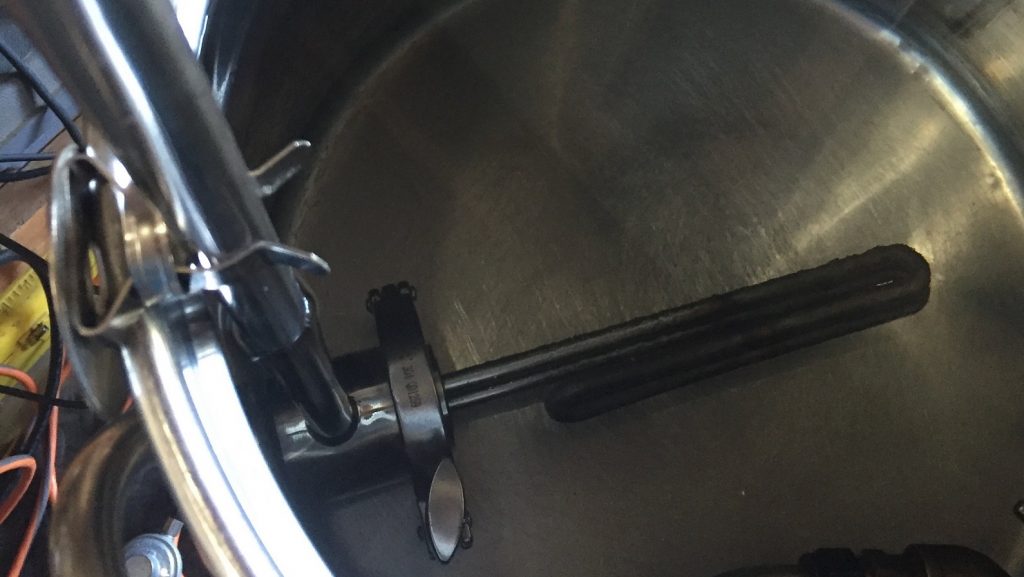
While the water was heating, grains were milled directly into a fabric filter, which was eventually dropped into the hot water. After some stirring, Jake checked to ensure he hit the target mash temperature.
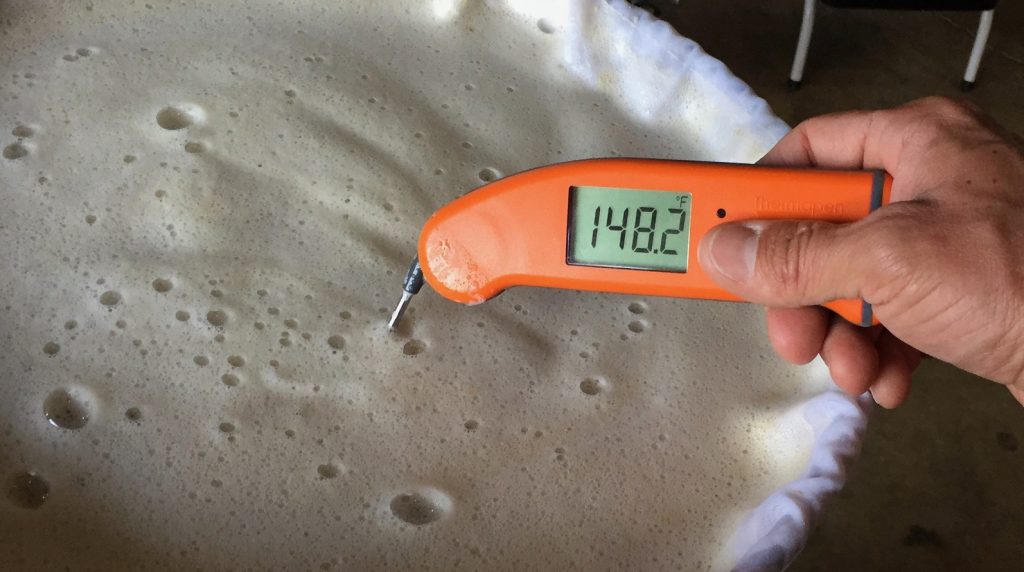
The mash was left to rest for an anxiety provoking 30 minutes.
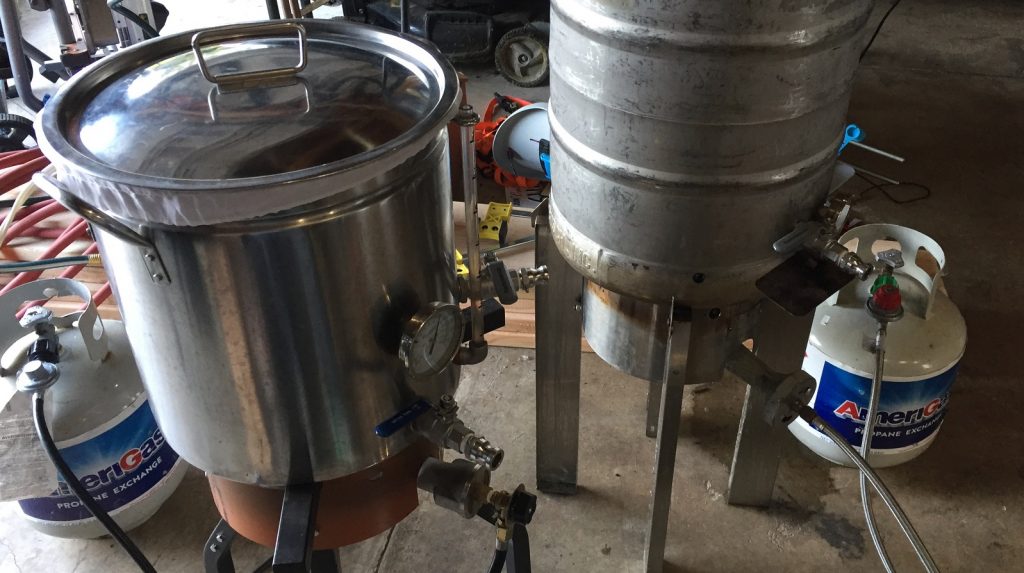
At the end of the short mash rest, the grain bag was removed and allowed to drip until boil volume was reached, during which the wort was being heated.
Once a boil was reached, Jake set a timer for a nail biting 30 minutes, adding hops at the times stated in the recipe.
When the boil was finished, Jake chilled the wort to slightly warmer than groundwater temperature with his immersion chiller.
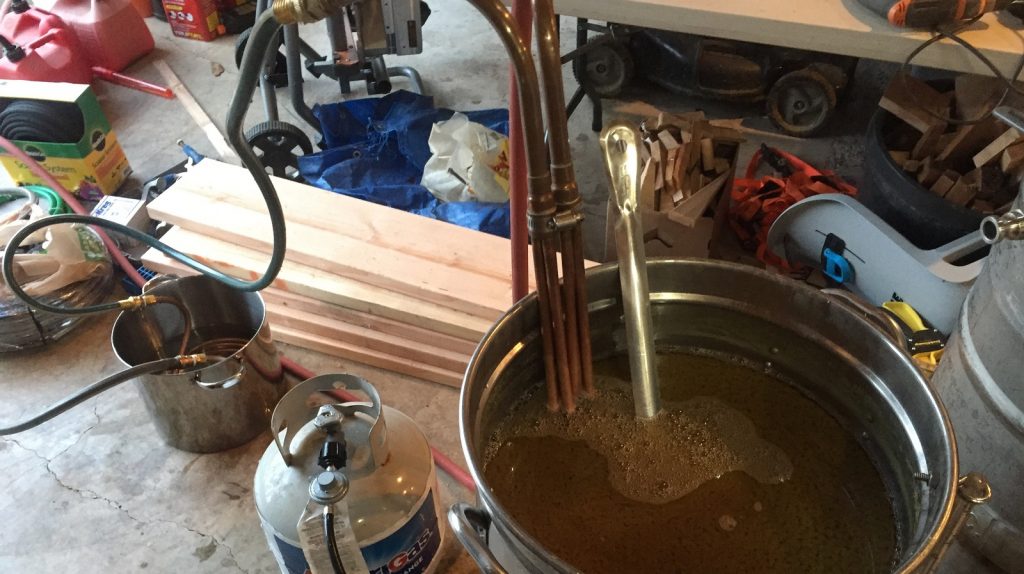
An initial hydrometer measurement showed the wort was at 1.060 OG, a bit higher than planned, so in true Short & Shoddy fashion, Jake added some water to bring it down to the 1.053 OG target.
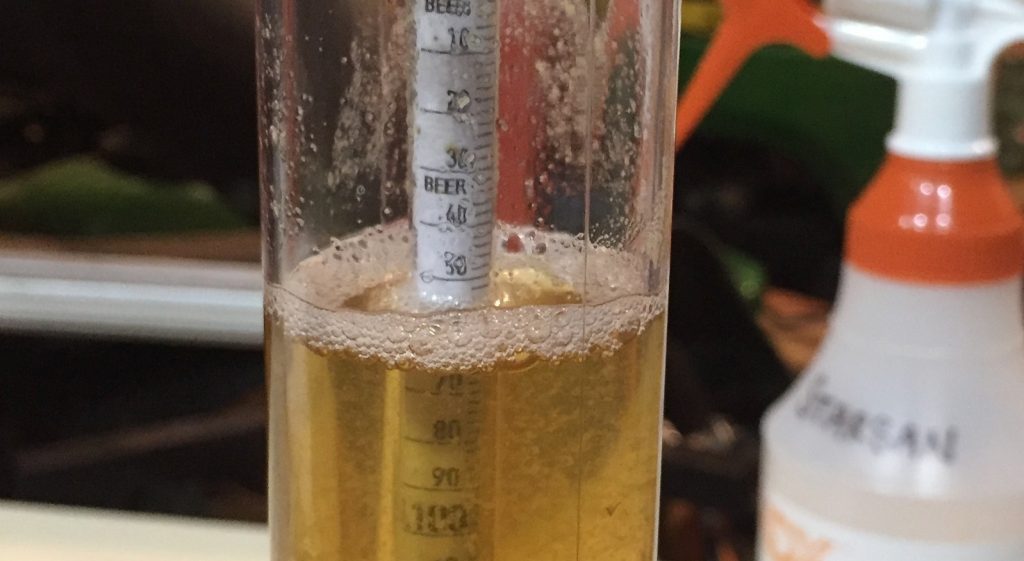
The wort was then racked to a fermentor without first letting it settle, meaning it included a good amount of kettle trub.
After placing the filled fermenter in a chamber controlled to 66°F/19°C, Jake pitched the Imperial Yeast L13 Global starter he’d thrown together about 12 hours earlier.
While fermentation activity was noted a few hours later, Jake had to swap the airlock for a blowoff assembly 36 hours after pitching, an uncommon occurrence for most lagers.
The beer was left alone for 2 weeks, at which point it was showing no signs of fermentation activity, so Jake took a hydrometer reading confirming FG had been reached.
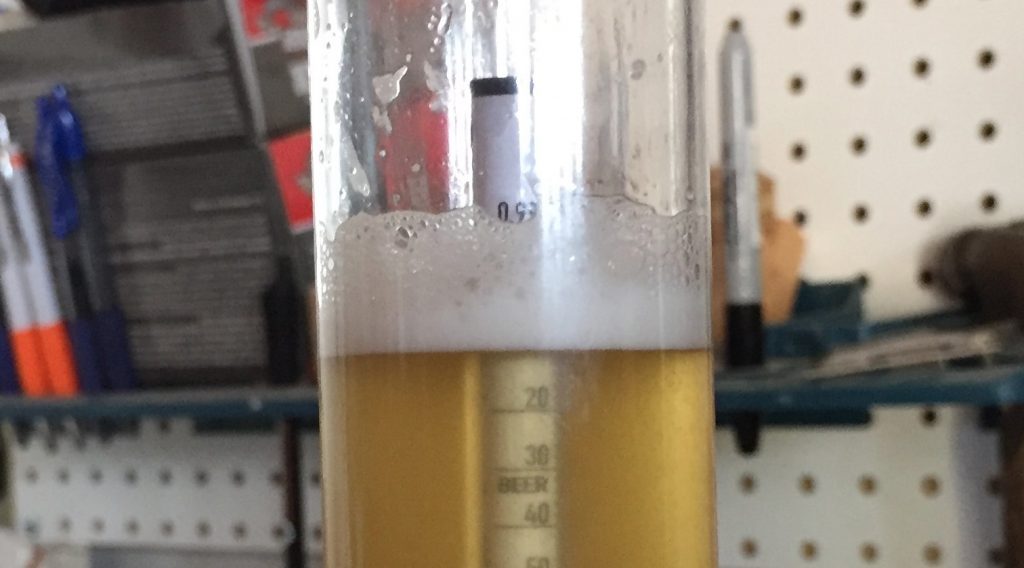
The warm beer was then racked into a sanitized keg.
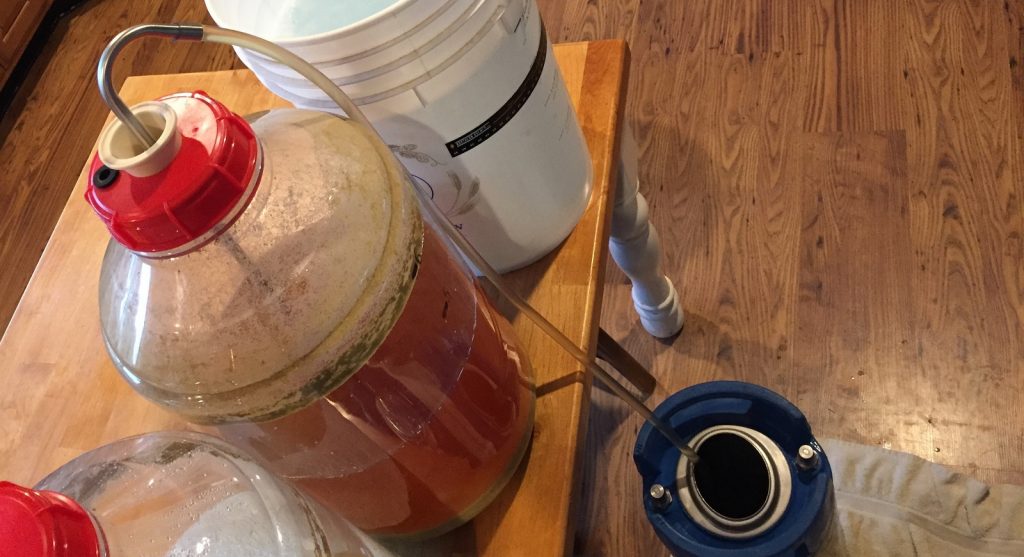
The filled keg was placed in Jake’s 38˚F/3˚C keezer where he left overnight before fining with gelatin. Since this beer would need to be transported to the convention center, Jake pressure transferred it to another keg a couple days before Homebrew Con so as to leave any trub behind.
| RESULTS |
A total of 22 people of various levels of experience participated in this Short & Shoddy evaluation. Participants were first asked to identify the style they believed the beer to be based on their perception.
Tasters were then instructed to rate how hoppy, malty, and dry they perceived the beer to be on a 0-5 scale where a rating of 0 indicated “not at all” and 5 indicated “extremely;” these ratings were then averaged.
Tasters were provided a list of common hop, malt, and yeast characteristics then instructed to select from each the one they perceived as being strongest in the beer.
Hop Characteristics
Malt Characteristics
Yeast Characteristics
Next, participants were asked to indicate whether or not they detected any off-flavors in the beer; those who did were provided a list of common off-flavors and instructed to select the one they perceived as being strongest. Out of the 22 participants, 1 reported perceiving a light-struck character.
Tasters were then asked to rate how much they enjoyed the beer on a 0-5 scale where 0 indicated they hated it and 5 indicated they loved it.
Finally, the beer style was revealed to participants and they were asked to rate how representative it was on a 0-5 scale where 0 meant “not at all” and 5 meant “exactly.”
Jake’s Impressions: Full disclosure– I’ve never tried a Helles Exportbier prior to making this beer. That being said, I was extremely satisfied with this beer overall. Aroma had a nice bready malt sweetness with some herbal hop. Flavor was well balanced, neither malt or hops really dominated, and it finished with just a touch of malt sweetness without being sugary sweet. Definitely a bit thicker and creamier body than a standard Munich Helles with a good level of carbonation to keep it refreshing. If I was going to change anything, I might try adding an additional 5 IBUs of flameout hops to add some increased hop complexity in the flavor/aroma (but not much to keep that Helles-like balance). I was amazed at how flavorful the malt character of the beer was overall, and I attribute much of that to the 100% grist of Mecca Grade malts which I’ve been using exclusively for my base malts the past year and a half. You definitely get your money’s worth with their malts! I was shocked using Global fermented at 66˚F/19˚C– I’ve read the other xBmts with this yeast fermented warm, but it’s still amazing to watch the beer take off like an ale and finish up tasting like a lager with no discernible off flavors…mind blown!
My Impressions: Having fermented a number of pale lagers with traditional lager yeast at ale temperature, I was relatively confident this Helles Exportbier was going to be at least decent, but in the end, I thought it was better than decent and represented the style rather well. In fact, the freshness of Jake’s beer made it quite a bit more enjoyable than commercial examples, which have usually been sitting on a warm shelf of a month or more. I perceived no esters or phenols, just a delicious bready maltiness balanced by an appropriate hop character and clean fermentation profile.
| CONCLUSION |
German Helles Exportbier… ahem, Dortmunder Export… is a style that seems to be somewhat overlooked despite it’s easy drinking credentials. Pale in color, light body, and crisp finish with just a hint more oomph than a more traditional Munich Helles. Given the generally simple list of ingredients, Helles Exportbier tends to present with a balanced malt and hop profile, making for a deliciously refreshing quaffer.
As a beer that’s traditionally fermented cool with a classic lager strain, the warm temperature Jake fermented his Short & Shoddy version at could be assumed to result in noticeable fruity esters. However, that really didn’t seem to be the case, as blind tasters overwhelmingly noted a cracker/bread crust malt character with supportive earthy and floral hop notes, about what one might expect from a typical German Helles Exportbier.
Taking into account the numerous past xBmt results on fermentation temperature when using the Weihenstephaner strain, which Imperial Yeast L13 Global purportedly is, along with the results from this evaluation as well as Jake’s and my personal experiences, I’m compelled to believe this German Helles Exportbier was a pretty decent example of the style. Not a single comment on DMS, diacetyl, acetaldehyde, esters, phenols, or anything else one might expect given the brewing process used to make this beer. One person did think they detected a light-struck character, which is certainly possible, though neither I nor any other person who tasted the beer that I spoke with picked it up at all.
Yet again, the dogma that lagers require cool fermentation temperatures is called into question. Of course, this was not a comparative evaluation, it’s entirely possible a cool fermented version of the same beer would have produced noticeably different results. But I’m becoming more and more doubtful, and I certainly plan to continue making tasty lager beers using these Short & Shoddy methods!
If you have thoughts about this Short & Shoddy brew, please feel free to share in the comments section below!
Support Brülosophy In Style!
All designs are available in various colors and sizes on Amazon!
Follow Brülosophy on:
FACEBOOK | TWITTER | INSTAGRAM
If you enjoy this stuff and feel compelled to support Brulosophy.com, please check out the Support page for details on how you can very easily do so. Thanks!


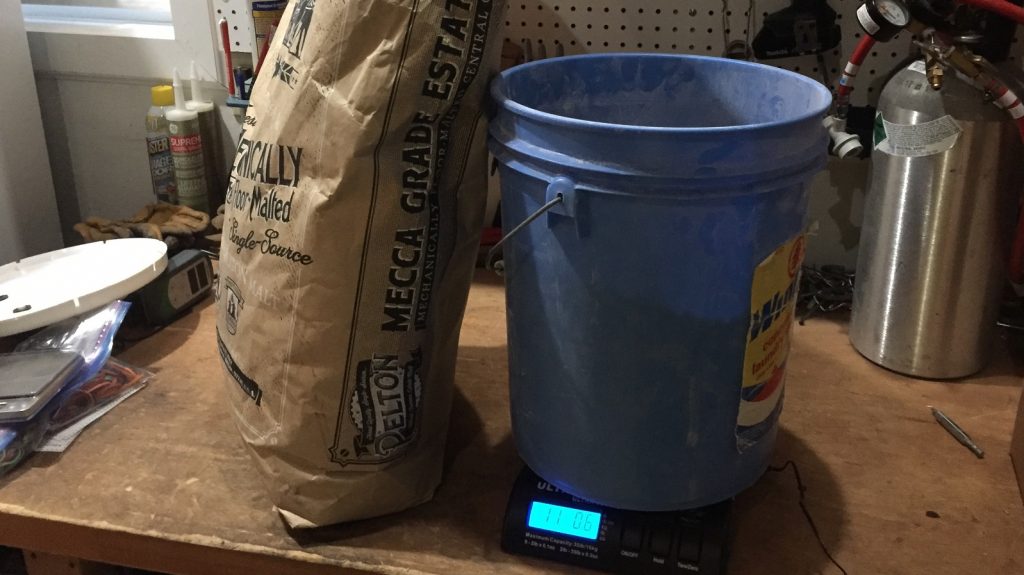
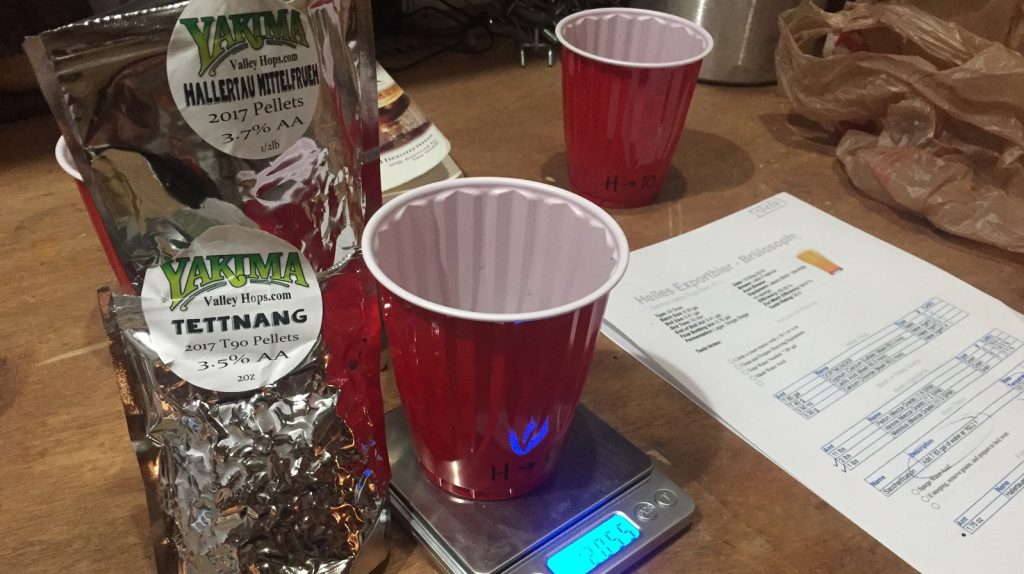
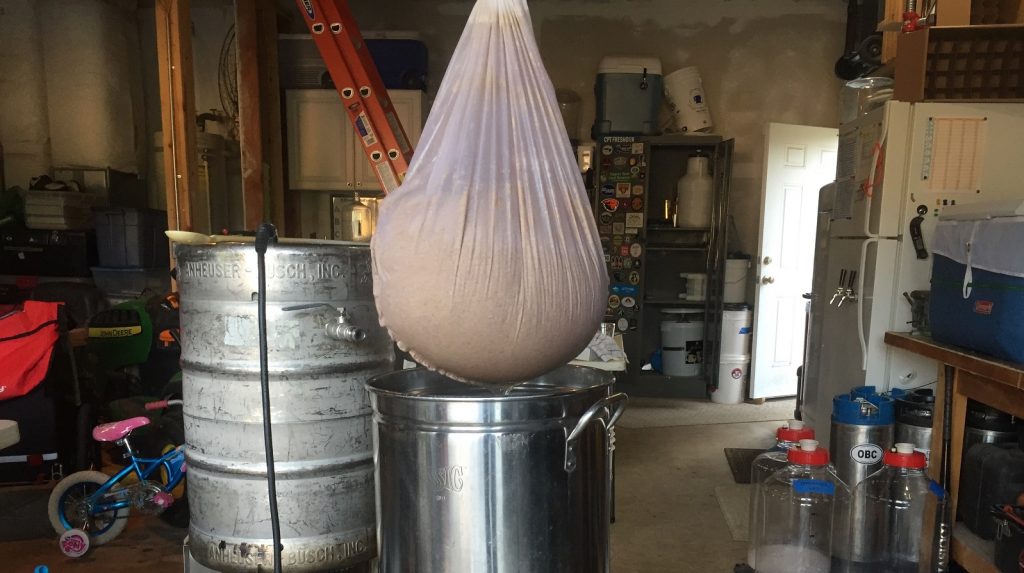
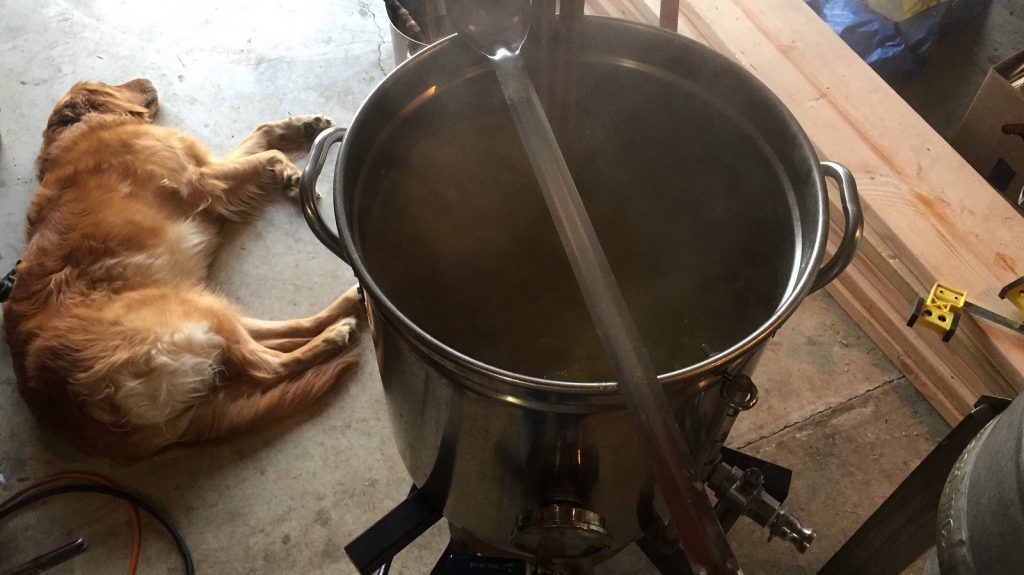
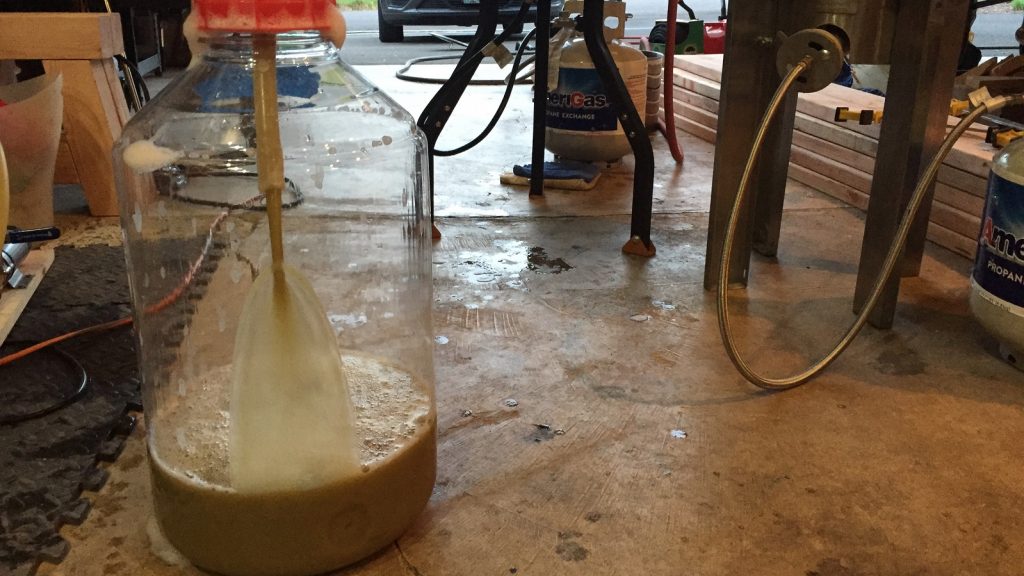
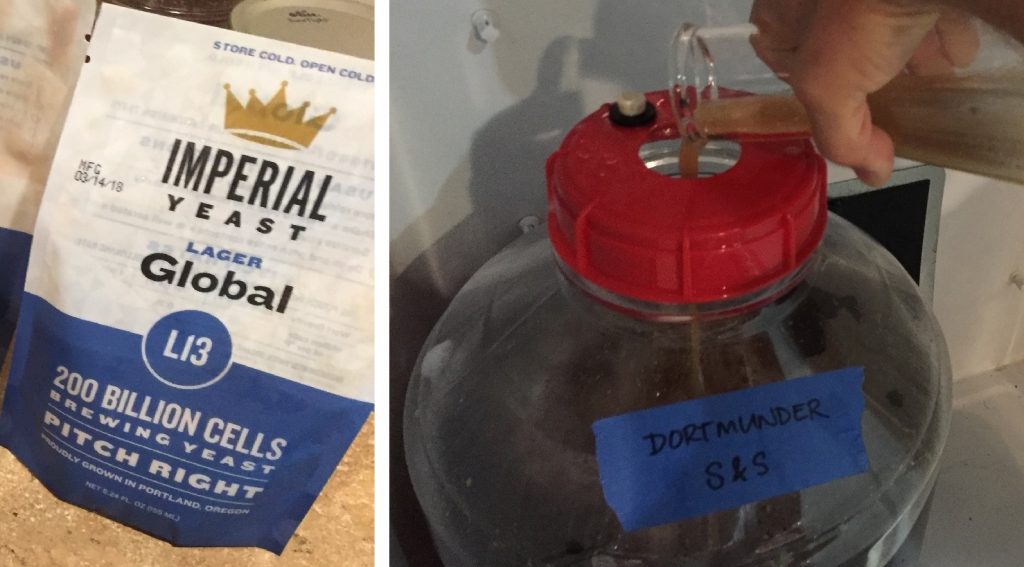
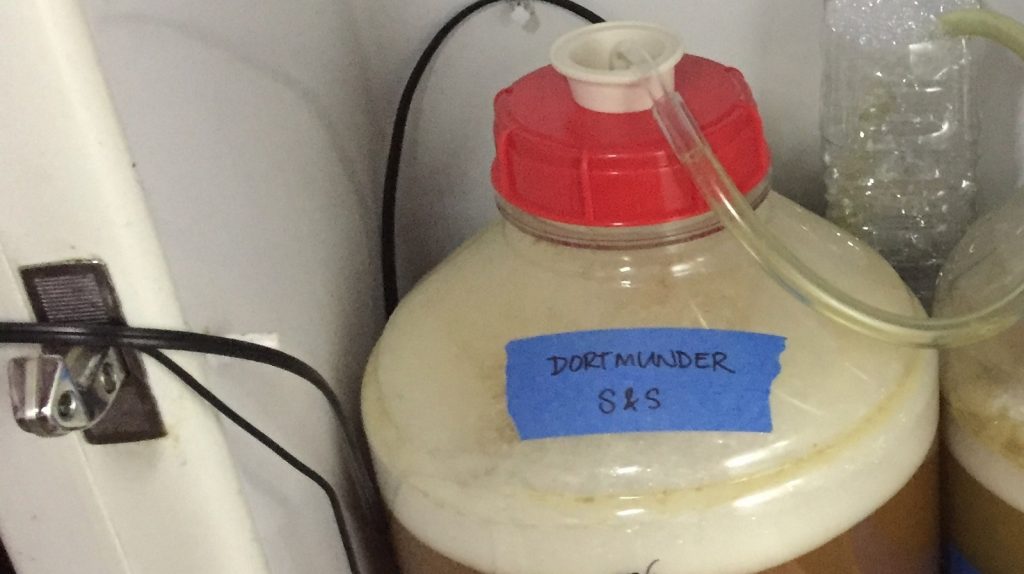
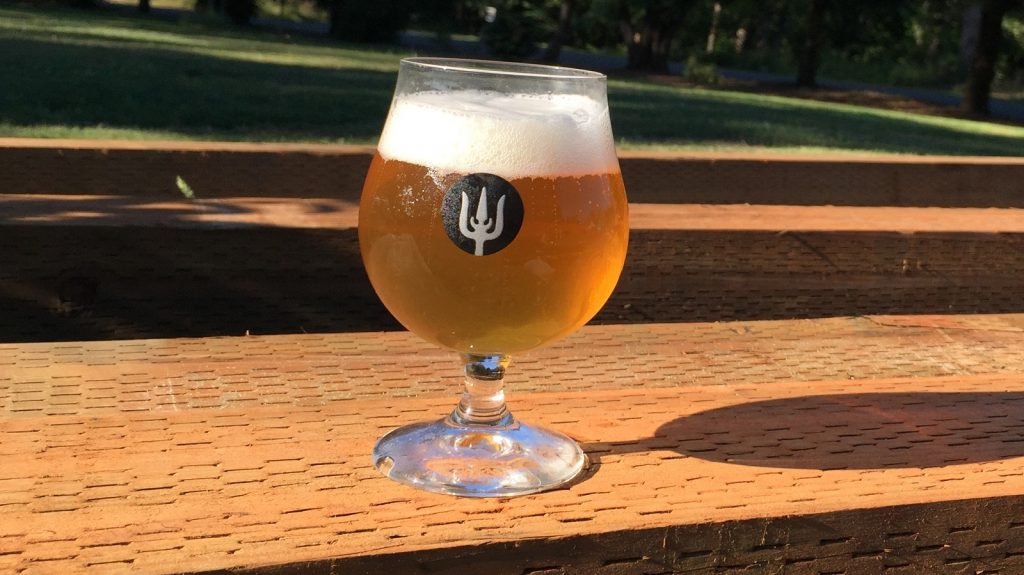
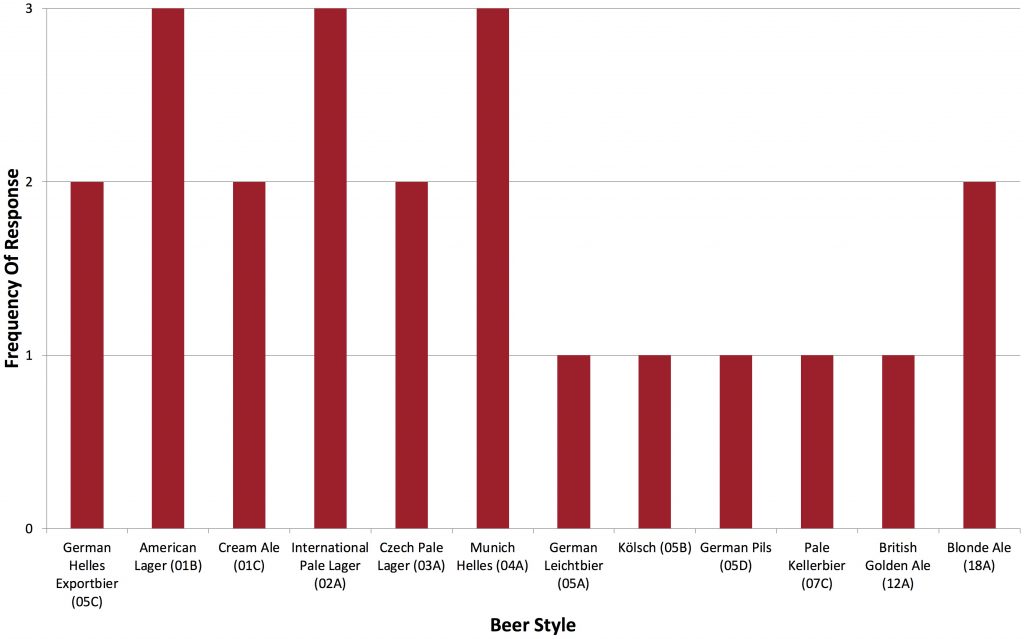
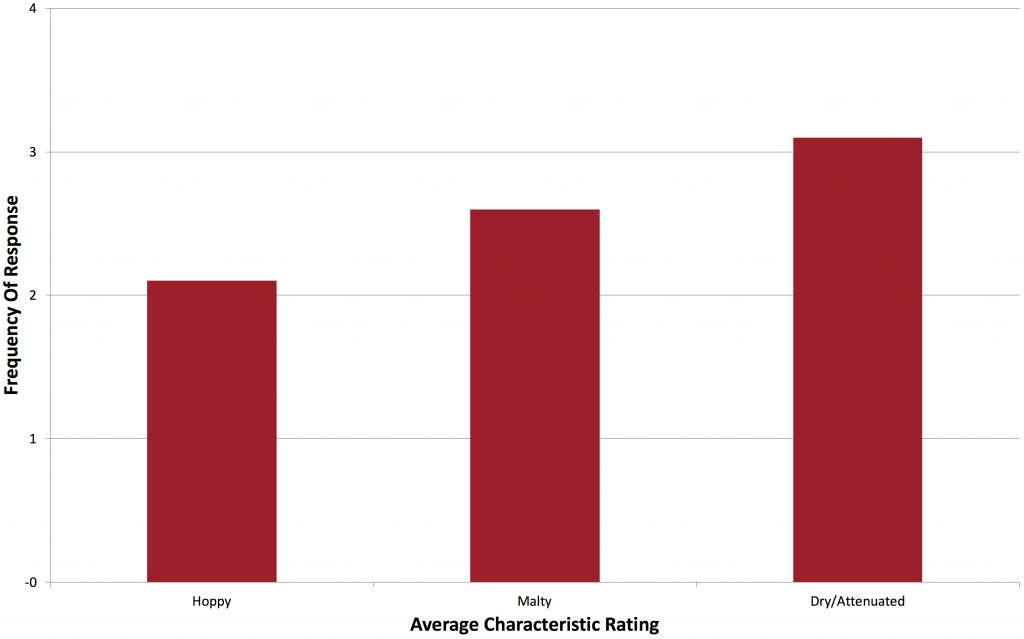
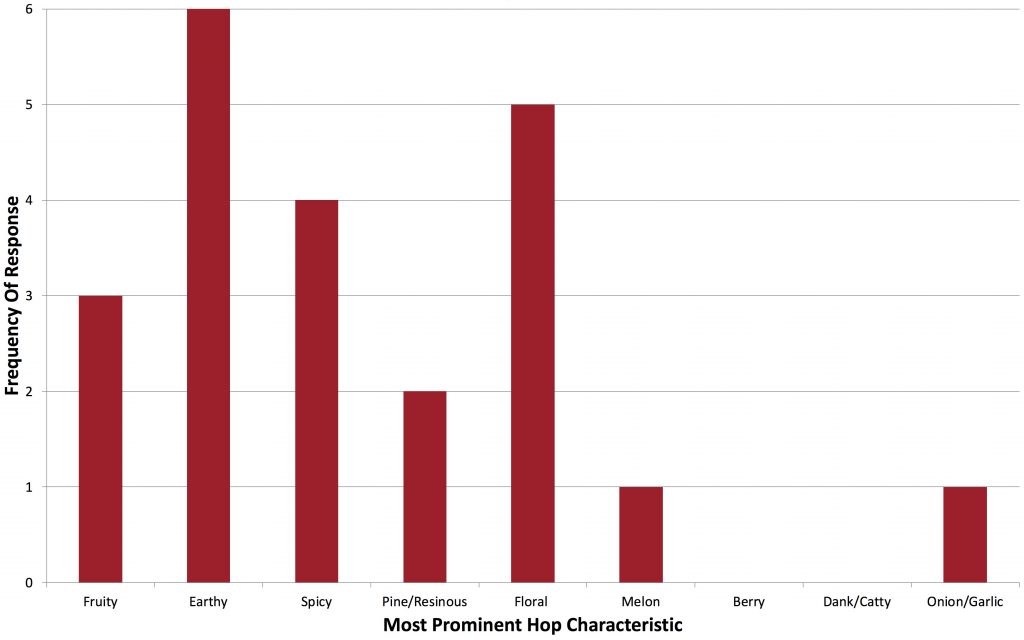
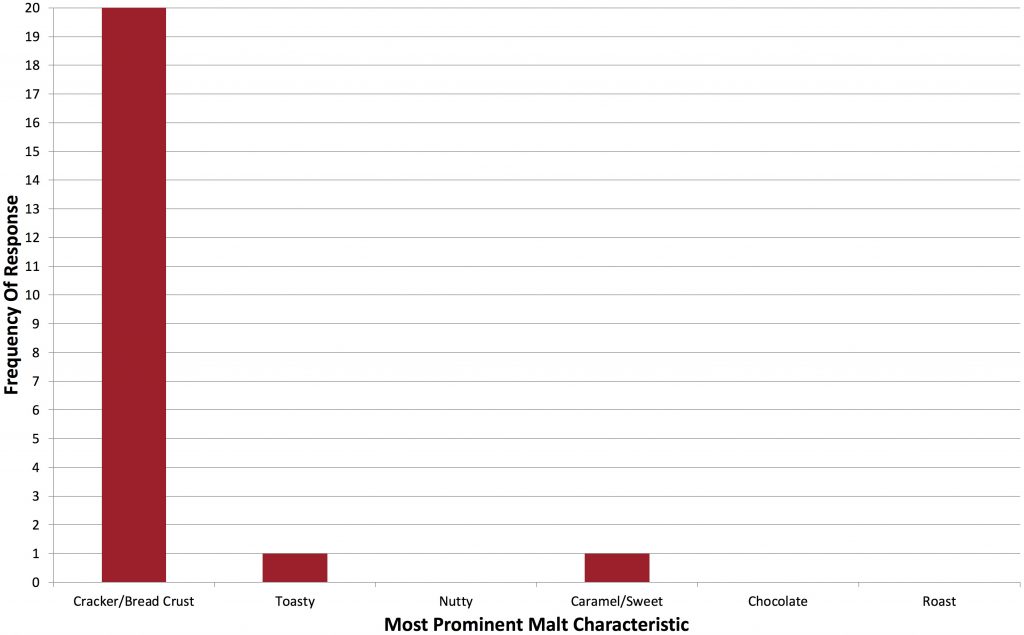
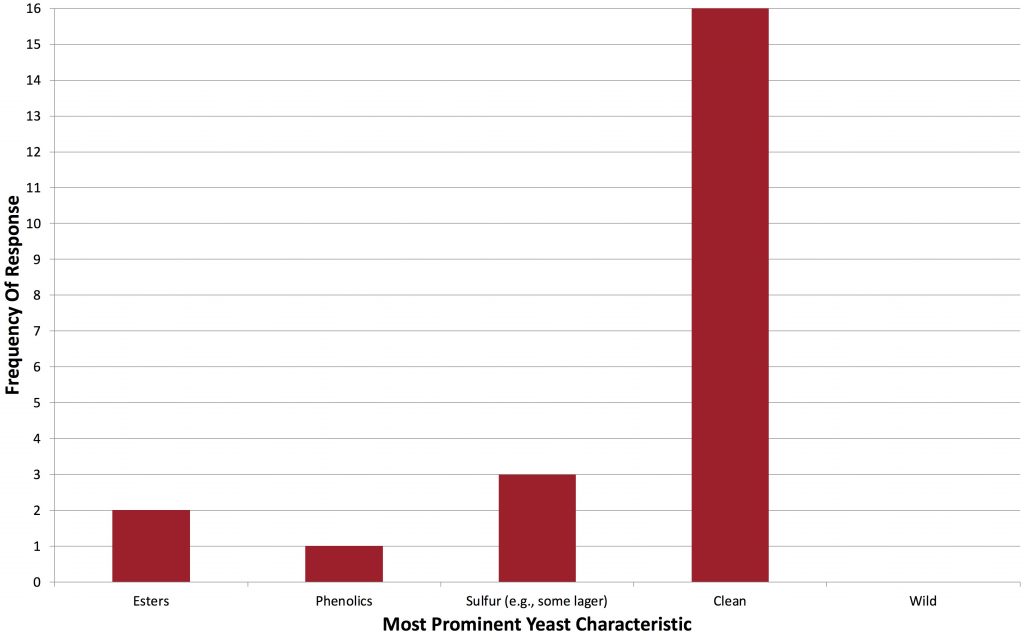
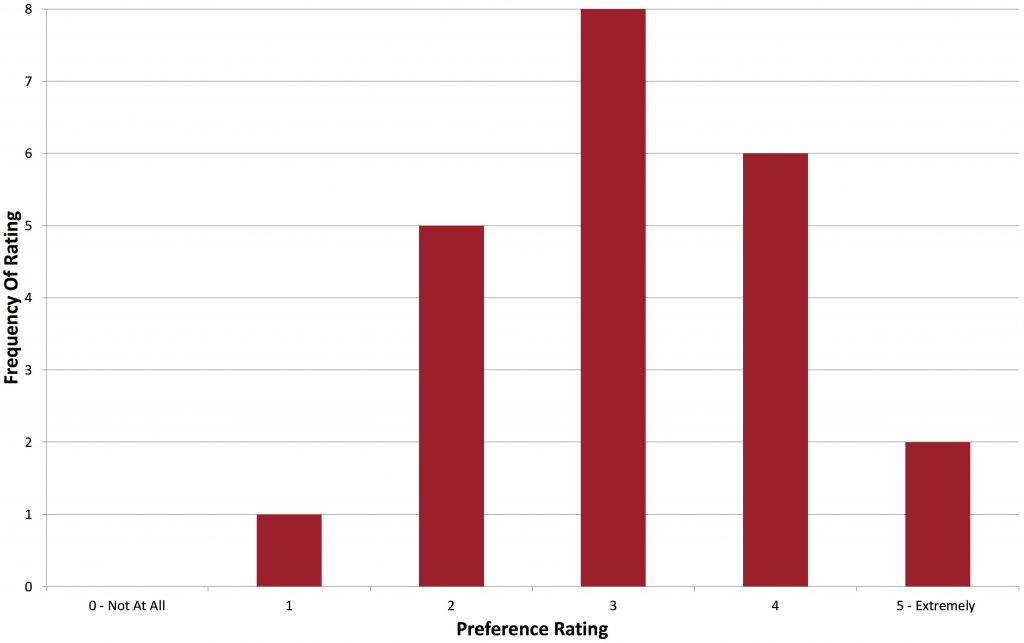
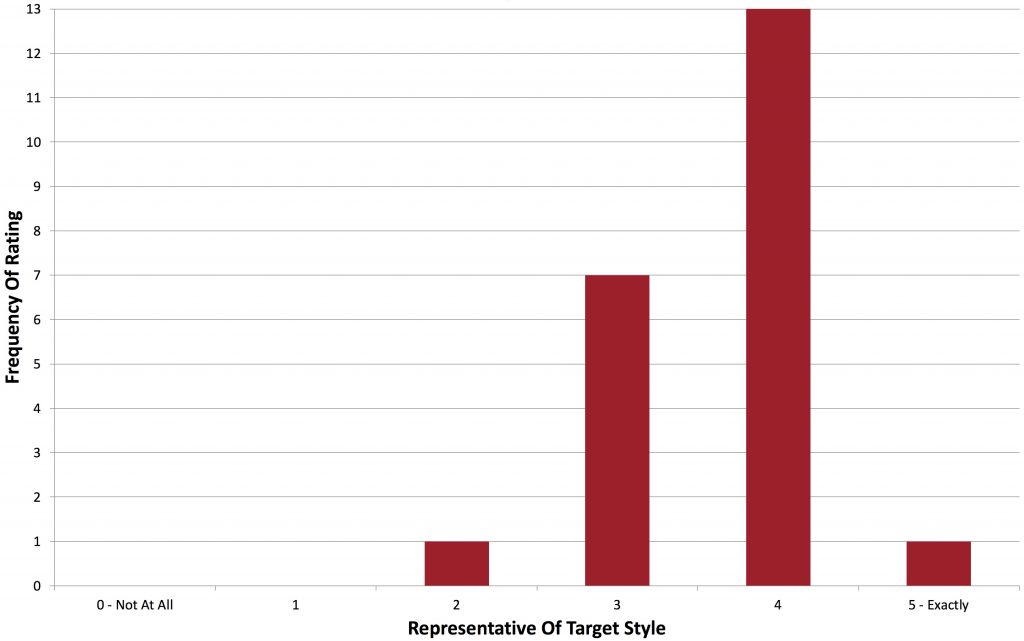









14 thoughts on “Short & Shoddy | German Helles Exportbier”
I’m loving these S + S posts. It’s nice getting confirmation that as long as you pay attention to cleanliness and ingredient quality, you can make enjoyable-at-worst beer of just about any style.
Another data point suggesting lagers don’t need cold fermentations. On the other hand, playing devil’s advocate, most of the warm-fermented lagers on Brulosophy are made with the Weihenstephaner yeast, which is very forgiving. I’m nervous of fermenting lagers warm with other yeasts.
I agree. Took a page from an older xbmt and did a SMaSH lager (Avangard Pilsner & Spalt hops) and made 2, 1-gallon batches using 34/70 (Weihenstphaner) and S-23 (not sure where it comes from). Fermented both at 68F for 2 weeks and now have them “lagering” for another 4 at 58F. Going to see how they turn out sometime in late August. Initial smell when transferring off the trub, 34/70 seemed typical but the S-23 smelled almost “Belgianesq” – tart fruit to me.
Pablo 54: Any updates? I know when I had Wyeast 2565 ferment too hot one summer it absolutely smelled (and subsequently tasted) like a Belgian strain.
I’m becoming more convinced with everything I read and hear. Pitching plenty of HEALTHY and VIABLE yeast is the most important part of the brewing process (cleanliness also, of course). Seems like if the yeast is healthy and not stressed they will get the job done given the appropriate time for the temperature used during fermentation.
Like Ben, I would also like to see other yeast strains used in this manner which are supposedly more “temperature sensitive”. I know Marshall also uses Harvest warm with good results. Maybe try a different approach with some Hef or Belgian strains cool vs warm fermented. Kinda the opposite approach as lager strains. See if they produce the same esters and phenolics cool fermented as they do warm.
Great xbmt guys. I am wondering how many weeks was it from racking to keg (from fermenter) to serving? Thanks.
Cheers, Josh
It lagered for roughly 4 weeks before serving
Agreed gentlemen … on all above. Was starting to look at next brew session and this one fills the bill. Especially a lager at more ale temps. And I love GLB Dortmunder. My last three brews have have S/S and not disappointed. Latest one, finishing up in primary now, is a session IPA (Simcoe and Denali with small bittering charge of Chinook) is a combo of S/S and a technique I viewed from our friends at Basic Brewing using a 30 minute hop stand approach. Not looking to satisfy a judge just make tasty beer.
Another great S+S post. As a criticism, I personally would like some additional data on the people who vote 4 or less on the “Representative of Target Style” category. It would be nice to see if they all come to a consensus on what’s missing, or if they’re all across the board. Alternatively, it might also better guide readers who want to copy the recipe and make small iterations to it.
OYL-114 Bayern Lager is one of my house yeasts now, works great at 65F.
LaBici vienna lager from 5 Rabbit is reportedly a commercial beer that uses this yeast warm as well.
Also a fan of short boils even with an all pils grist, never a problem.
Another confirmation of the Pareto Principle: 20% of effort will get you 80% of the results and it will take 80% of the effort to get the last 20%. It totally makes sense. However, it also means that 80% of the people have only 20% of the tasting ability, etc.
It’s great to make clear that most people can’t taste the difference and it is important not to fool yourself into thinking there is no difference.
The Schott Principle: 95% of beer drinkers think they’re better tasters than the other 5%. Ehh?
I have read a fair deal of your recipes and found that you consistently have a boil time of only 30 min. Why is this?
Well, for one, that’s sort of the point of the Short & Shoddy series. But I do brew some non-S&S beers with reduced boils, mostly because it saves some time without sacrificing quality.